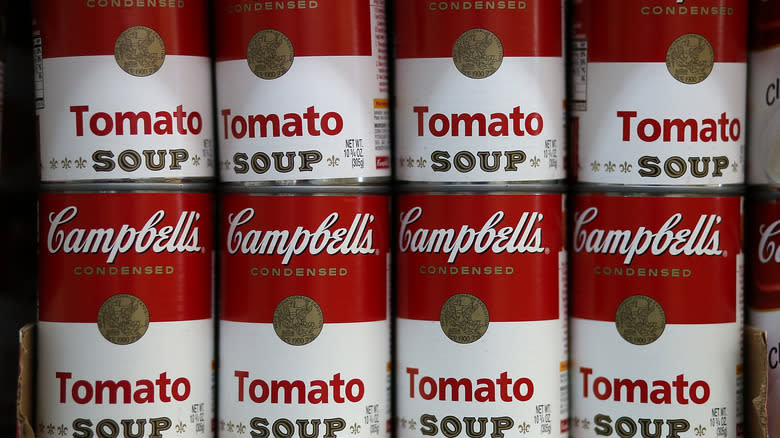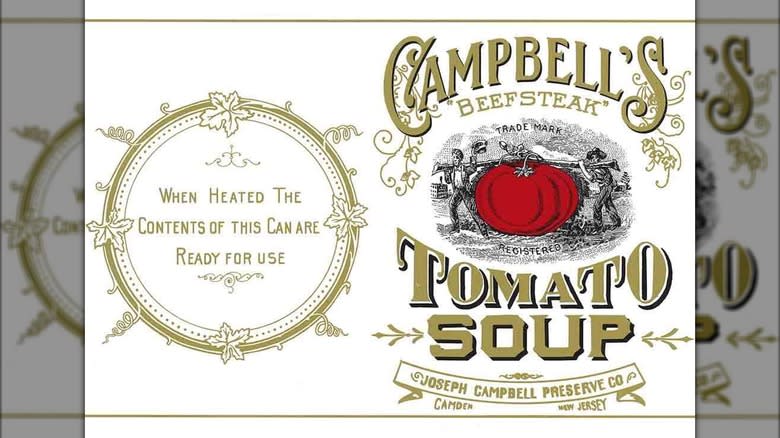The History Behind Campbell's Iconic Tomato Soup

On July 9, 1962, 34-year-old Andy Warhol debuted his first solo exhibition "Campbell's Soup Cans" at the Ferus Gallery in Los Angeles. The inspiration behind his piece? "I used to have the same lunch every day, for twenty years, I guess," explained a deadpan Warhol, via The Museum of Modern Art. "The same thing over and over again." In one swift move, Warhol rocket-launched the pop art movement to the forefront of the public consciousness and breathed renewed relevance into an unwavering classic: Campbell's Tomato Soup.
An icon isn't made overnight. The soup has been around for over 150 years, and before it was called Campbell Soup Company, it was first the firm of Anderson & Campbell in Camden, New Jersey in 1869. Perhaps unsurprisingly (but impressively considering the company's now-massive and varied brand portfolio), it's always been about tomatoes for Campbell's. In 1895, the company released its first-ever can of ready-to-eat soup, Beefsteak Tomato -- a huge deal. As the side of the can instructed, "When heated the contents of this can are ready for use." It got even more innovative.
Shortly after in 1897, the company invented the process of condensing soup, which meant smaller cans and "condensing" the price from $0.30 per can to $0.10. By 1911, Campbell's tomato soup was being distributed nationwide and quickly became such a staple for American consumers that the company added the word "soup" to its moniker, officially rebranding as the "Campbell Soup Company" in 1922.
Read more: 20 Popular Canned Soups, Ranked Worst To Best
Can You Dig It?

Fast forward to the present day, and foodies are still loving Campbell's tomato soup. The company goes through a whopping 850,000 tons of tomatoes every single year, and 80% of the farmers with whom Campbell's works have been partners for at least 25 years.
In fact, the popularity of Campbell's tomato soup is responsible for a huge development in the agricultural sphere at large. In 1910, the company launched a "tomato breeding program" in Cinnaminson, New Jersey, a series of field experiments for breeding a variety of different tomato species with the best taste, strongest disease resistance, and quickest, most fruitful (pun intended) germination. The results were extremely influential. The J.T.D. (named after John Thompson Dorrance, a Campbell's exec), Garden State (named after New Jersey), and Rutgers (the most popular Jersey heirloom tomato) species all come from Campbell's experiments. Campbell's agricultural research even helped put New Jersey on the map as a leading national tomato-growing state.
In many ways, tomatoes and art have remained at the top of Campbell's brand dogma since the beginning. The now-iconic red and white tomato soup can label debuted in 1898, and per the lore, the design was inspired by Cornell University's football team uniforms; a company executive attended a Cornell-Penn football game and dug the color palette. So, next time you dig into a grilled cheese and tomato soup, you'll be chowing down on a taste of history -- and eating like an artist.
Read the original article on Tasting Table.

